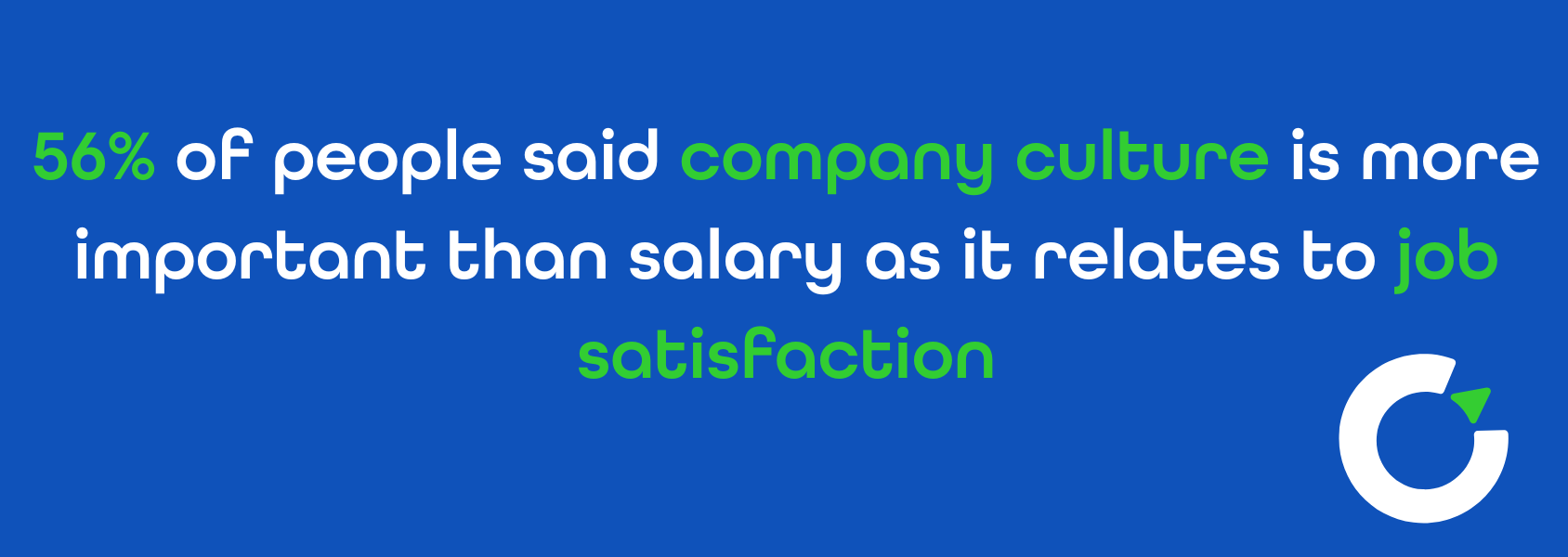Employer branding has become one of the most discussed topics in recruitment over the last decade. Companies invest significant time and money into creating career sites, producing glossy videos, and promoting their culture online. But for jobseekers, these polished campaigns are only a small part of the story.
Today, candidates have more information at their own disposal than ever before. With access to review platforms, LinkedIn, and industry networks, they have multiple ways to build a picture of what it’s like to work somewhere. A career decision is a major life choice, and most jobseekers won’t rely solely on the information a company provides about itself. They want to know if the lived experience matches the message.
This shift means that employer branding is no longer just a marketing exercise. It’s about alignment. If the image a business has doesn’t match what people experience inside, candidates will see through it quickly. For
employers, the challenge is not just to “sell” a workplace, but to ensure that the story being told is real and consistent. For
jobseekers, the challenge is to interpret the signals correctly and make decisions based on the most reliable information available.
This blog explores where candidates look for those signals, the gaps they often find, and how employers can approach culture and branding with more honesty.
What is employer branding?
Employer branding is the way a business is perceived as a place to work. It’s the reputation a company builds through its values, culture, and how it treats employees. Unlike consumer branding, which focuses on customers, employer branding focuses on attracting and retaining talent. It shows up in everything from job ads and interview processes to employee reviews and word of mouth. A strong employer brand isn’t just about polished marketing, but reflects the real, day-to-day experience of working in the business.
Beyond the Careers Page
A careers page is often the first stop for a candidate. It provides the official line: company values, employee stories, and role description. But most jobseekers know that this content is curated. To make a real decision, they go deeper.
1. Employee Reviews
Platforms like Seek, Indeed and Glassdoor provide anonymous reviews from current and former employees. Jobseekers don’t treat these as the absolute truth, but they do look for patterns. A handful of great reviews might be dismissed as staged, and a series of highly negative reviews might be taken with caution. But if multiple reviews mention the same issues, such as lack of career growth or poor communication, candidates assume there’s substance behind them.
2. LinkedIn Profiles
Candidates often scan LinkedIn to check how long people typically stay at the company. Short tenures across multiple employees can raise a red flag, while visible promotions show there’s a scope for growth.
3. Social Media
Company pages on platforms like LinkedIn, Facebook and Instagram, might show carefully planned content, but jobseekers often value the unpolished posts more. A photo of the team celebrating a milestone or an employee sharing a casual update can give more insight than a professional campaign. Silence can be telling too: if staff rarely engage with company posts, it may reflect a lack of pride or connection.
4. Word of Mouth
Informal conversations can carry the most weight. In industries where networks are tight, like the engineering and construction industries, one negative story about a company’s culture can spread quickly. Jobseekers often ask friends or ex-colleagues for their views, and a personal recommendation - or warning - can outweigh anything found online.
5. Job Ads
Even the wording of a job description communicates culture. Phrases like “must be resilient” often signal long hours or a high-pressure environment. On the other hand, ads that clearly outline responsibilities, benefits, and career pathways show respect for candidates’ time and transparency in expectations.
Together, these sources build a picture that is far harder for companies to control than a career site.
The Gap between Branding & Reality
The biggest risk for employers is the disconnect between what they promote and what employees actually experience. This gap can arise for several reasons:
- A company may genuinely aspire to certain values but haven’t embedded them yet.
- Leadership may present a modern image externally while maintaining outdated practices internally.
- Marketing may focus on perks - like free lunches or gym discounts - while employees leave because of poor management.
Jobseekers notice these inconsistencies. For example, a company that talks about “career growth” but where LinkedIn shows most staff leaving within 8 months sends a clear signal. A business that promotes flexibility but whose leaders regularly post about late-night work creates doubts about work-life balance.
The impact goes beyond attraction. When new hires join based on an inaccurate image and find the reality different, turnover increases, and the employer’s reputation worsens further. Authenticity is therefore not just a moral position but a practical necessity.
The Candidate’s Perspective
From a jobseeker’s point of view, the decision-making process revolves around one core question: what will it actually feel like to work here?
They use several lenses to answer this:
- Turnover:
High turnover suggests instability or dissatisfaction. Long tenure among staff suggests stronger engagement.
- Flexibility:
Candidates want to know whether flexible working is genuine or just a headline policy. They look for evidence in how managers and employees talk about their work.
- Growth:
Jobseekers pay attention to promotions, skill development, and progression. If employees leave to progress elsewhere, that says a lot about internal opportunities.
- Leadership Style:
How leaders communicate publicly gives a sense of their management approach. Do they share recognition, or only promote themselves? Do they communicate in clear, respectful ways?
For many candidates, these factors outweigh salary and benefits. Culture, trust, and the sense of being supported matter more in the long term.
How Jobseekers Try to Spot Company Culture
All the signals’ jobseekers check - reviews, LinkedIn, social posts, and word of mouth - ultimately come back to one question: what is the company’s culture really like? For candidates, culture is the deciding factor that sits behind salary, perks, and even job titles. According to a recent study, 77% of people consider a company’s culture before applying for a job there, and 56% said company culture is more important than salary.
Therefore, employers should be aware of the ways candidates actively test for culture during the hiring process. Here’s what they do:
- They ask specific questions in interviews
Jobseekers rarely settle for “What’s the culture like?” Instead, they ask for examples: “How does flexible work actually play out week to week?” These questions require concrete answers.
- They judge the recruitment process itself
The way you treat candidates becomes a reflection of how you treat employees. If interviewers run late, communication is unclear, or feedback is inconsistent, candidates assume that’s the culture.
- They study employee behaviour online
Candidates pay attention to whether employees engage with company content, share milestones, or talk positively about their work. Silence or disengagement can speak just as loudly as criticism.
- They compare stated values with reality
If a business highlights collaboration but reviews mention isolation in the workplace, the inconsistency stands out. Alignment between what you say and what employees say is key.
For employers, this means culture isn’t something you can simply declare. It’s constantly being assessed from the outside. Candidates are looking for proof, and they piece together evidence from every interaction and source available.
Building Employer Brands that Hold Up
For companies, the strongest employer brand comes from alignment. It’s not about creating a perfect image but ensuring that what is promoted externally matches reality internally.
Practical steps include:
- Encouraging employees to share authentic experiences: Do not share scripted testimonials. Real voices carry more weight than polished videos.
- Aligning HR, leadership, and marketing: This ensures all messaging reflects the actual employee experience.
- Being transparent about challenges: Acknowledging areas under improvement builds trust more than pretending everything is perfect.
- Celebrating progress: Sharing stories of employees who have grown, projects that have succeeded, or policies that genuinely support staff demonstrate culture in action.
Companies that focus on authenticity are more likely to attract and retain staff who are a genuine match for their culture.
Employer branding today is defined less by what companies say and more by what jobseekers discover. Reviews, networks, LinkedIn profiles, and day-to-day behaviours all add up to a picture that candidates trust more than any words on a website or campaigns.
For employers, the challenge isn’t to create the perfect message but instead to ensure that the message matches reality. That means recognising how candidates are already testing for culture and being prepared to show proof.
The most effective employer brands hold up under scrutiny. They’re lived every day, reinforced by employee voices, and consistent across touchpoints.
If you want to understand how your employer brand is really landing with candidates, don’t just look at your website or your careers page. Ask your employees. Or ask us! We hear what jobseekers are saying every day, and we can help you close the gap between the brand you promote, and the culture people experience.
We hope you found this blog post helpful and good luck!







